Photography and contemporary art galleries in Barcelona
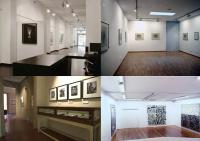
I just got back from a week in Barcelona dedicated to the research of a contemporary art or photo gallery that can represent me in the Catalan. It was my first time ever in Barcelona, therefore I had to learn something about the city, understand where expositive center and galleries were located, appreciate the atmospheres and taste the districts. This article is a resume about the experiences made last week that can be used to prepare an itinerary for those who are searching for a space to expose or for those who simply wants to visit art and photo galleries in Barcelona. The emphasis, because of my motivations, is posed on photo or contemporary art galleries that are potentially interested to bet on young photographers.
Where to find art galleries in Barcelona
The majority of the contemporary art galleries of the city are found in the district Eixemple, north west of the Catalunya Place.
The galleries are concentrated along c. Consell de Cent, between the Rambla and c. Aribau. Therefore you can find them everywhere also in c. Aragò, Valéncia, Enrique Granados, Balmes and in the pl. Latamendi. They’re numerous on the streets in the nearby: c. Diputacio’, Rossello’, Provença and Mallorca. In this entire zone there’s something like fifty galleries, sometime literally one near to each other, mostly in c. Consell de Cent.
L’Eixample is a modern and dynamic zone, plenty of restaurants and bars, some new and kind of high tech, typical of the aseptic milieu of businessmen. It is a neuralgic and frequented zone, even by tourists, as it is not far away from the center, near to the Rambla and the Battlò House. The streets are jammed and the foot way crowded. The houses are modernized, well-kept and rich. Well, it is a high level and modern district. The sensation that I had is that the galleries in this district are the one that expose the most contemporary art, who bet on the new artist, on the innovative idea; inside those streets the actual history of art in Barcelona is written. Obviously, there are also galleries that expose works of well-known artists, more classic works and occasionally antiquity.
In the historical center the galleries are grouped inside 2 streets: c. Petritxol in the Barrio Gotic, c. Montcada at La Ribera. Around the Museum of contemporary art there is something else. Except one or two exception of superb galleries, the ones of the center are real institutions/museum where it is impossible to expose if your name doesn’t appear on art books studied at school, or simple shop windows with artistic products sold to tourists. In these last shops, the exposed works are even beautiful, but often conventional. Or there is no real temporary exposition but rather works by several artists to be sold. This gives the idea of a luxury shop more than a gallery that develops contemporary art events, take an artist under its wing and grow up with it. Moreover photographies are virtually absent from the historical center. It is practically impossible to expose in this zone as emerging photographer and probably would not even interesting from the career point of view.
The third zone of galleries goes from the enchanting district of Gràcia to Tres Torres. Galleries here are more spread that in Eixample. Although this, some are concentrated on c. Verdi, some in the triangle between Avinguda Diagonal, Travessera de Gràcia and c. Gran de Gràcia and some around the tube stop Bonanova and near Pl. Francesc Macià.
Personally, even if I do not know the entire city of Barcelona, the streets and lanes of the old town of Gracià are maybe my favorite zone of the city, a place where I would like to live. Here’s an amazing popular and lived atmosphere, antique and shabby houses that remember me about Latin America, long and narrow tree-lined streets. Inhabitants, animated streets, no tourists, gypsies playing under windows begging for money and typical restaurants where menu with starter, pantumaca, first, second, dessert, wine and coffee costs less than 10 euros. Galleries though are isolated and scattered, because the local population is not the typical art buyer and the plausible visitor (or buyer) must move to visit the gallery. Those are the reasons for which, from a commercial and working point of view, it would be better to choose the gallery center inside the Eixample. Nearby Augusta Street, which is more central and animated as it is similar to the Eixample, there are two of the few galleries of Barcelona entirely and uniquely dedicated to photography, thus it’s worth the walking.
Art galleries in Barcelona
Barcelona turned out to be an active and lively city for contemporary art, confirming its fame of city attentive to art and new talents that everyone knows all around the world.
Galleries are concentrated in a couple of zones, which allows the formation of a gallery pole, probably facilitating the possibility of visitors, collectors and professionals beyond vernissages. Galleries are all well visible, on crowded streets and have windows. This is an enormous difference compared for example with Milan, where the majority of the art galleries are unfortunately all hidden. If you don’t know that in Who Knows Who Street n. 33, ringing at the fifth doorbell, opening the door and entering the garden, you would probably never know that there’s a gallery over there. Unfortunately this way the majority of art galleries in Milan are precluded from every occasional visitor.
Another great difference between Milan is the absence of arrogance and sometime even impoliteness that you must face, not in all, but in many galleries of the north Italian city. In Barcelona I’ve always been politely and happily welcomed. In some cases the galleries politics wasn’t to watch works proposed from tyou, but rather the directors choose the artists. Even in this case though I’ve always been respectfully received. In some cases I was asked to send a dossier via mail, sending that gave back some answer and some others are still waiting to be received. The majority of the galleries anyway gave me the opportunity to fix directly an appointment with the director or even show immediately my work, without waiting or going back again.
Welcoming has always been warm, interesting, disposable and even involved. And this is the demonstration of how here gallerists are ready to see what you propose, independently by the fact that they decide to represent you or not. In some cases the discussion was long and the directors gave me advices, encouraged me, opened new possibilities and proposed future meetings.
In the whole, a couple of galleries would start suddenly to expose my works, while some 3 or 4 are potentially interested and the dialogue is still open. But the possibility to be represented are is definitely concrete.
A selection of art galleries in Barcelona
One of the first galleries that I visited along c. Consell de Cent is Manel Mayoral, a beautiful gallery that exposed a wonderful collective of famous contemporary photographers, such as Gabriele Basilico and Candida Hofer. Undoubtably when the shots are made by famous photographers the quality strikes your eyes, the images where absolutely wonderful, without exceptions and it’s something that doesn’t happen quite often walking around the galleries. Perfectly presented, modern ambient, large and elegant, rich and refined, not the simple white and empty room of many galleries. The gallery only exposes works of well-known international artists.
Another beautiful gallery of the zone that exposes photography is Senda. Once again wonderful spaces and interesting works, but their politic as well is not to look at works proposed directly by photographers but rather the direction choose the artists during the international exhibitions.
Two more beautiful galleries along c. Consell de Cent, which expose paintings, sculptures, pictures and installations are Toni Tapies and Carles Taché. In both cases you can’t present your work on site or ask for an appointment, but you must send a dossier via e-mail. In the same street, there were two galleries who were exposing pictures, which are Contrast and Llucià Homs. The first one was hanging little black and white pictures by Martìn Sala, that I personally completely disliked, apart for a couple of exceptions. The other photographers represented in the gallery had interesting works. I particularly appreciated the work of Robert Berlin. The second gallery shown an interesting work: Seven Deadly Sins by Lukas Maximilian Huller, the most impressive work between the ones I saw in Barcelona. For both galleries it is possible to fix an appointment to present your works.
The exhibition that mostly surprised me has been Hot Dreams’ motorbikes exposed in the Gòmez Turu gallery. I enjoyed the idea that those were real sculptures that deserved the honor of being exposed in a contemporary art gallery. Moreover, they’re more beautiful than many other “artistic” objects. They’re perfectly finished and they are also functional objects, objects made not for the art market but for motorbikes lovers, real and concrete objects, for people, objects that have a sense inside. Love them!
This is a perfect example of what I mean when I say that contemporary art suffer of the same problem of unintelligibility and isolation of classical music. They should both follow the example of Jazz at the beginning of the last century or the example of Rock in the 60’s, which completely reinvented the language and the musical universe itself, keeping themselves near to the real world and being perfectly intelligible. Talking about the art dealers, greetings for their courage to bet on such an exhibition like this one.
I also enjoyed 3 punts, José de Ibarra and Mito galleries in the Eixample. The three galleries regularly expose pphotographs and I had the pleasure to talk with all the directors of the three, interested at my work, helpful and open-minded towards me, sometime even prodigal of propositions, advices and suggestions. In Mito gallery there were some sculpture by Brian Dettmer, made deforming and uniting old audio cassettes, that I found simply genial, one of the contemporary art work I mostly appreciated during last months. The last gallery I must suggest for this zone is Adn, which you must send your works via e-mail to receive a quick and kind answer.
Kowasa is one of the few gallery in Barcelona that only expose photography. It is in a certain way an extension of the photographic library at the ground floor (which is supplied with wonderful monographs and pictures books), in which young unknown photographers expose their photos, but in a space that is actually a bookshop more than a prestigious art gallery. The space at the second floor exposes pictures in a classical manner, but these are mostly pictures that are part of the collection, therefore is not easy to expose a personal work.
Among the other expositive spaces that are not part of the galleries center of the city, a particular mention surely goes to Trama. This gallery, situated in a crowded street of the Barrio Gotico, exposed, in a beautiful, elegant and spacious space, some interesting gigantic prints of Aziz+Cucher. It is not possible though to present your work directly to the gallery, it is up to the direction to choose the exposed artists.
I also appreciated a little gallery called Cubo, with a young and informal ambient, music turned on. Pictures has literary texts attached and were sold to low, low price. It is interesting for those who’d like to expose in a space without excessive requests.
Camara Lucida is a gallery that only exposes photography. Beautiful even if it doesn’t have any big space, but many little rooms and a splendid inner court with tables open air. It seems a lively place of exchange, intimate and welcoming. It remembers me of my gallery in Paris, Chambre avec Vues. Instead of a unique volume with a temporary, brief exposition, there are many rooms with images of different photographers, and the space of the exposition that seems to be the one of the moment. Between the exposed works, I particularly appreciated the one of Branislav Kropilak, his Trains series (which I thought about, but never realized it) and Landing series. I think they’re both brilliant and perfectly realized.
The last gallery that only exposes photography is Fotonauta, but it was closed when I walked by because they’re moving into a different location.
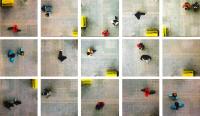
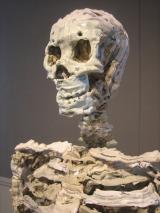
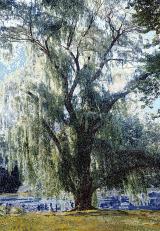
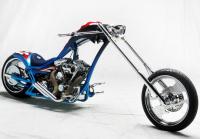


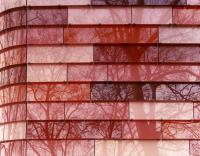





Max
said, March 12, 2008 @ 12:54 pm :
Bella sintesi della tua esperienza. Cmq è dura, molto dura.
benvenuto
said, March 23, 2008 @ 10:57 pm :
ho una serie di foto
come potervele mostrare ?
Fabiano Busdraghi
said, March 23, 2008 @ 11:50 pm :
Ciao Benvenuto,
nella pagina Contact c’è la mia mail, se mi scrivi ci mettiamo daccordo.
Ilaria Colapinto
said, April 16, 2009 @ 12:35 pm :
Ciao Fabiano,
ho appena letto il tuo articolo e mi ha rallegrata. Sono una studentessa di letteratura italiana moderna e comparata affascinata dall’arte contemporanea e innamorata della fotografia. Vorrei fare un tirocinio ,sovvenzionato dall’Unione Europea, presso una galleria d’arte contemporanea a Barcellona. Proponendomi attraverso l’invio di una mail ad una delle gallerie che hai suggerito credi sarà accolta la mia iniziativa? quali gallerie pensi siano più interessate ad avere studenti tirocinanti? Ah, ovviamente il tirocinio è completamente gratuito per le gallerie, il cui compito sarebbe di provvedere alla formazione del tirocinante per un periodo che va da tre a sei mesi. Grazie mille, Ilaria
Fabiano Busdraghi
said, April 16, 2009 @ 1:51 pm :
Ciao Ilaria
è per me difficile dire quali gallerie potrebbero essere interessate e quali no, perché sono andato con altri intenti e perché è passato più di un anno, e ormai ho contatti solo con quella con cui ho un rapporto di collaborazione.
Ti posso però dire fra le gallerie che mi sono piaciute sia per la qualità dei lavori esposti che per gli spazi, in quali sono stato ricevuto meglio, dal punto di vista umano e della gentilezza. Queste sono:
- la galleria Mito, dove fra l’altro uno dei titolari è italiano, molto simpatico;
- José de Ibarra, una persona estremamente gentile e disponibile;
- 3 punts, direttore e personale gentile e molto competente;
- Adn, bellissimo spazio e accoglienza gentile e disponibile.
Nell’ultima pagina dell’articolo trovi tutti i link ai siti delle gallerie. In bocca al lupo e buon soggiorno a Barcellona…